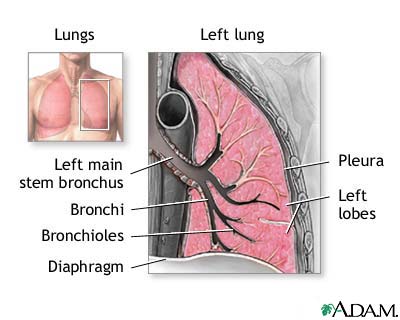# {SubscribeRect
width: 300px;
min height: 125px;
clear: both;
float: none;
position: relative;
difference-bottom: 1em;
-WebKit-border bottom right radius: 6px;
-WebKit-border bottom left radius: 6px;
-MZ border radius-BottomRight: 6px;
-MOH border radius-BottomLeft: 6px;
border bottom right radius: 6px;
lower left border radius: 6px;
}
# subscribeRect. Top
{height: 63px;
position: relative;
-WebKit-border top left radius: 6px;
-WebKit-border top right radius: 6px;
-MZ border radius, the upper-left: 6px;
-MZ border radius-TopRight: 6px;
top left border radius: 6px;
beyond the upper right radius: 6px;}
# subscribeRect. the top. Logo {
difference-top: 1em;}
# subscribeRect street. Interface
{display: block;
width: 99px;
position: absolute;
top: 35px;
right: 10px;}
# subscribeRect Street . interface Li {
display: block;
float: left;
width: 33px;
alignment: center;
text-transform: uppercase;
font: bold;}
. ie7 # subscribeRect street. interface. ie7 # subscribeRect street. interface Li {
display: block;
float: left;}
. ie7 # subscribeRect street. Interface {
position: static;}
# subscribeRect street. interface Li {
color: # 474956;
text-decoration: none;
cursor: pointer;
padding-top: 24px;
opacity. 75;
transition: opacity. 2s simplicity;
-Health transition: opacity. 2s simplicity;
-WebKit transition: opacity. 2s simplicity;}
# subscribeRect street. Or interface: when strattera you hover {opacity: 1;}
# subscribeRect street. Or interface. journal {background: URL ('http://cache Jezebel COM / assets / base / IMG / Publishing / newsletter icon PNG .. ».) top center no repeat;}
# subscribeRect street. Or interface. facebook {background: URL ('... http://cache Jezebel COM / assets / base / IMG / Publishing / icons facebook PNG) top center no repeat;}
# subscribeRect street. Or interface. googleplus {background: URL ('... http://cache Jezebel COM / assets / base / IMG / Publishing / icon-GPlus PNG) top center no repeat;}
# subscribeRect street. Or interface. Twitter {background: URL ('... http://cache Jezebel COM / assets / base / IMG / Publishing / icon-twitter PNG) top center no repeat;}
# subscribeRect. carrots
{position: absolute;
top: 63px;
Link: left. '25 Ease;
-Health Link: left. '25 Ease;
-WebKit transition: on the left. '25 Simplicity;}
# subscribeRect. select_facebook. carrot {left: 199px;}
# subscribeRect. select_facebook. panel. facebook {display: block; transparency: 1;}
# subscribeRect. select_facebook. panel. facebook IFRAME {difference-top: 5px;}
# subscribeRect. select_facebook street. Or interface. facebook {opacity: 1;}
# subscribeRect. select_googleplus. carrot {left: 199px;}
# subscribeRect. select_googleplus. panel. googleplus {display: block; transparency: 1;}
# subscribeRect. select_googleplus. panel. googleplus IFRAME {difference-top: 5px;}
# subscribeRect. select_googleplus street. Or interface. googleplus {opacity: 1;}
# subscribeRect. select_newsletter. carrot {left: 265px;}
# subscribeRect. select_newsletter. panel. Bulletin {display: block; transparency: 1;}
# subscribeRect. select_newsletter street. Or interface. Bulletin {opacity: 1;}
# subscribeRect. select_twitter. carrot {left: 232px;}
# subscribeRect. select_twitter. panel. Twitter {display: block; transparency: 1;}
# subscribeRect. select_twitter. panel. Twitter IFRAME {difference-top: 5px;}
# subscribeRect. select_twitter street. Or interface. Twitter {opacity: 1;}
# subscribeRect. bottom {
field: 16px 16px 16px 0;
Font size: 13px;
line-height: 19px;}
/ * Havre font size fix * / # #
Passersby subscribeRect. below
# # Jezebel subscribeRect. below,
# # Deadspin subscribeRect. below,
# # Fleshbot subscribeRect. Lower {font-size: 15px; line-height: 20px;}
# subscribeRect. below. Panel {>> << Health transition: opacity. '25 Ease;
-display: none;
opacity: 0;}
HTML5 # subscribeRect. panel. Twitter. label {display: block;}. HTML5 # subscribeRect. panel. newsletter. Subscribe {
. Display: box;
Display: MH-titles;
Display:-WebKit-ROM;
boxes orient: horizontal;
MOH box orientation: horizontal ;
-WebKit-box orientation: horizontal;
-width: 270px;
field: 3px 0px;}
HTML5 # subscribeRect. panel. newsletter. newsletter_signup entry # {newsletter_email
. box-FLEX: 1;
MOH window-FLEX: a;
-WebKit-field-FLEX: 1;
-width: 180px;
height: 22px;
color: # 999;}
# subscribeRect. select_newsletter. panel. newsletter. Button {margin-left. 5em; difference-top:-3px;}
# subscribeRect label {padding: 0 0 3px 0; display: block;}
/ ** specific areas ** /
# {subscribeRect background color: # EBEEDD, color: # 474956;}
# subscribeRect. top {background color: # CAD2A7;}
# # bystanders subscribeRect {background color: # F2F4F7;}
# # bystanders subscribeRect. top {background color: # 8C93A9;}
# # Gizmodo subscribeRect {background color: # F2F4F8;}
# # subscribeRect Gizmodo. top {background color: # 3697B3;}
# # Gizmodo subscribeRect street. interface Li {color: # F2F4F8;}
# # Deadspin subscribeRect {background color: # F0F0F0;}
# # Deadspin subscribeRect. top {background color: # 2CD5C7;}
# # Jezebel subscribeRect {background color: # E2F2F0;}
# # subscribeRect Jezebel. top {background color: # ABBABA;}
# # io9 subscribeRect {background color: # f2f2f2;}
# # io9 subscribeRect. top {background color: # AF8F9D;}
# # Kotaku subscribeRect {background color: # FAFCFF;}
# # subscribeRect Kotaku. top {background color: # C0CDDB;}
# # Jalopnik subscribeRect {background color: # DBE0E4;}
# # Jalopnik subscribeRect. top {background color: # 417FB9;}
# # Jalopnik subscribeRect street. interface Li {color: # DBE0E4;}
# # Fleshbot subscribeRect {background color: # FFECF4;}
# # Fleshbot subscribeRect. top {background color: # C74C7F;}
# # Fleshbot subscribeRect street. interface Li {color: # FFECF4;}. newsletter_signup. ValidationMessage. newsletter_signup. cn_message {
background color: # 000;
background color: RGBA (. 0, 0, 0, 0 75)
border radius: 5px 5px 5px 5px;
color: # FFFFFF;
padding: 5px;
position: absolute;
alignment: center;
width: 176px;
top: 110px;
}. newsletter_signup. ValidationMessage. newsletter_signup. cn_message: blank {display: none;}
# subscribeRect. top h4 {
padding: 0;
margin: 0;
position: relative;
top: 10px;
left: 10px;
text-transform : uppercase;
Font size: 18px;
color: # FFF;
opacity: 0. 8;}
# subscribeRect. top h4. followsite {font: bold, opacity: 1;}
# subscribeRect. cn_message {display: none;}




